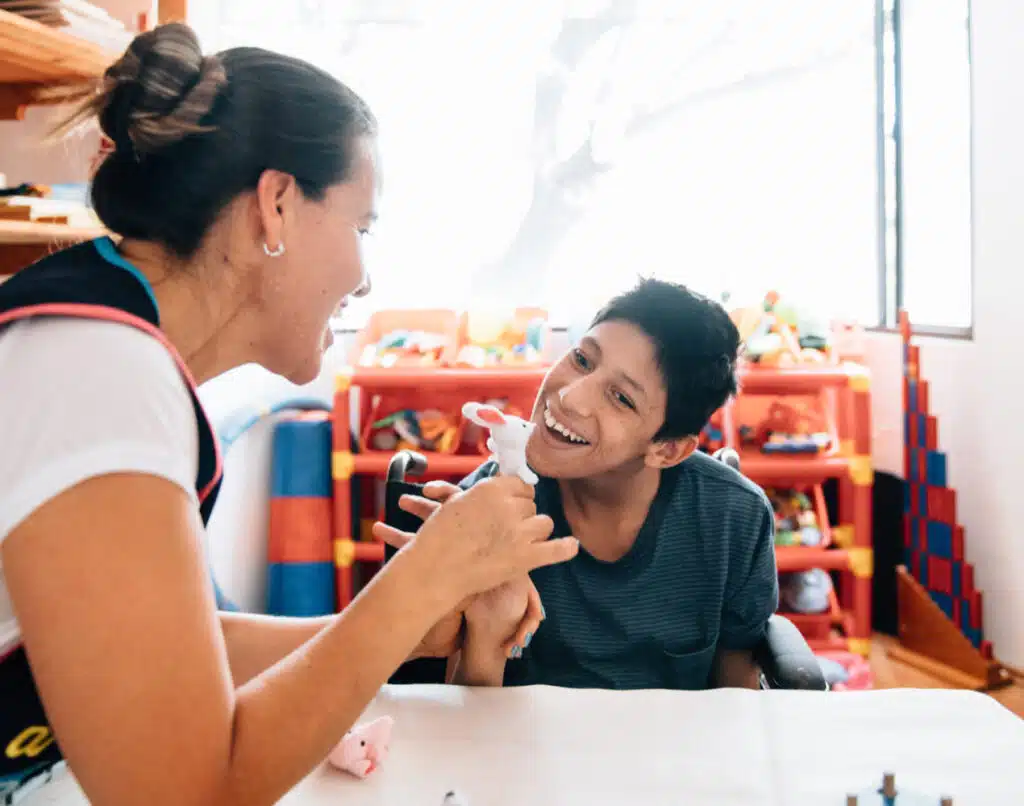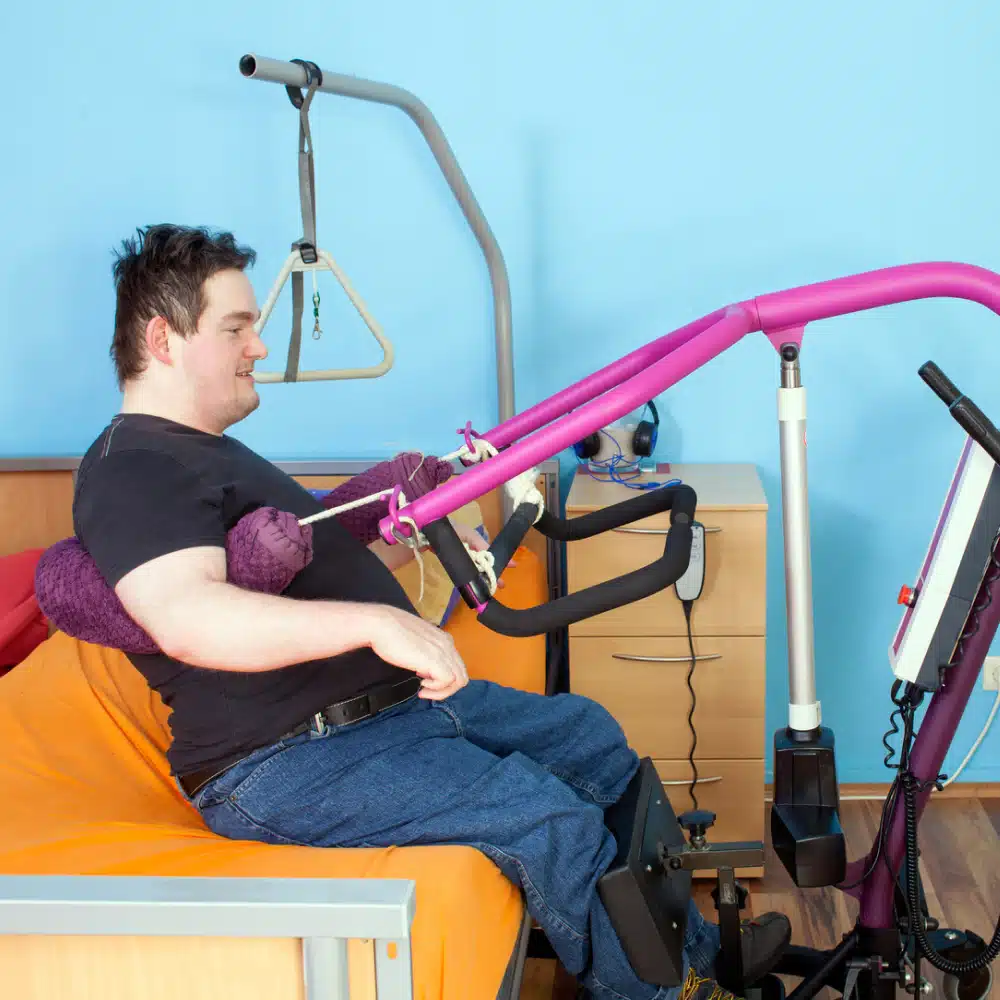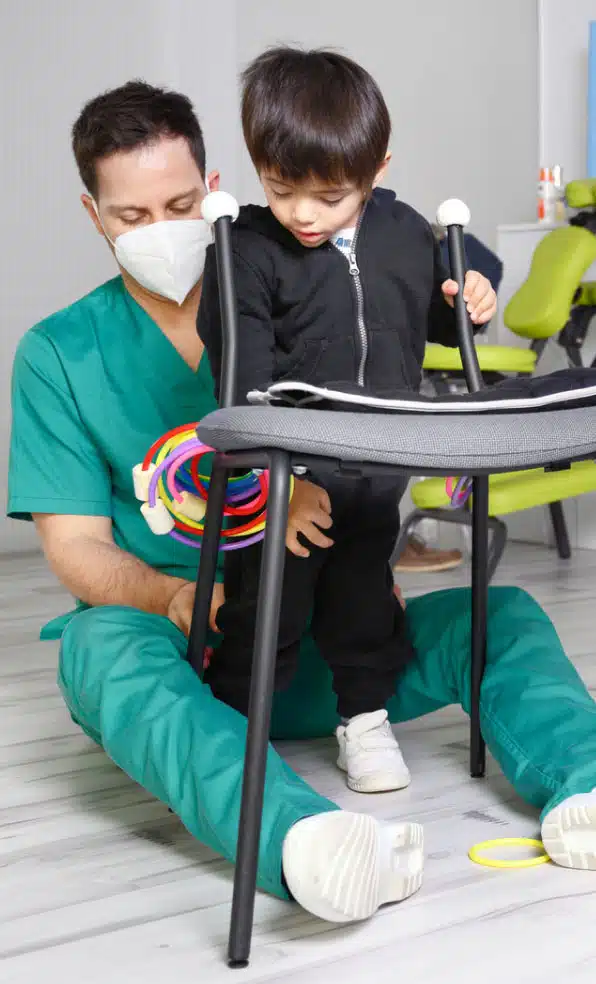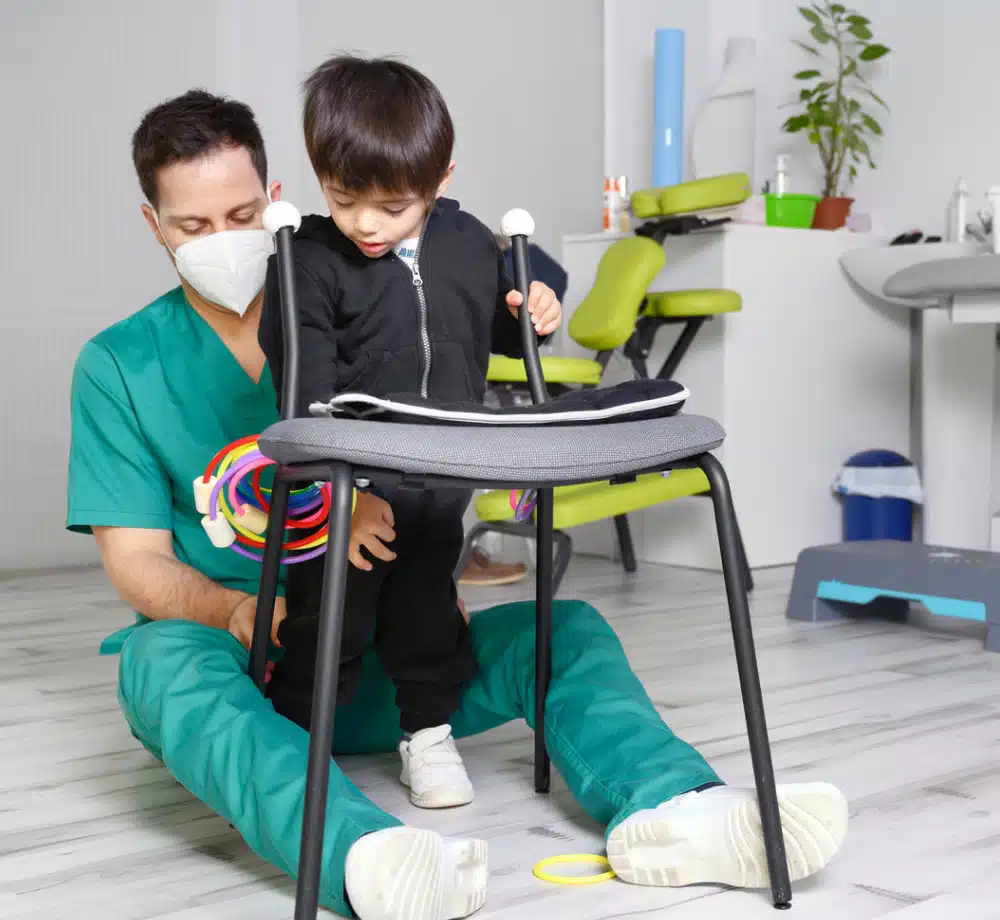The Cerebral Palsy Toolkit
When your child is diagnosed with cerebral palsy, it can dramatically alter the life you imagined for your child and your family. Caring for a child with cerebral palsy requires significant time and energy, and it can take a toll on your family’s finances. This guide can help you find support, cope with the changes, and explore ways to set your child on a path to a bright future.
Learning that your child has cerebral palsy is a devastating experience that may leave you with more questions than answers. You may wonder if your child will have a good future or be able to function independently as an adult. You may also wonder how your family will pay for care or how your other children will cope.
Working through these questions and the strong emotions accompanying this diagnosis can take time. Education about cerebral palsy, connections with other families of children with cerebral palsy, understanding your legal rights, and financial planning can go a long way in helping your family manage cerebral palsy.
What Is Cerebral Palsy?
Cerebral palsy is a group of disorders caused by brain damage or abnormal brain development, which affects movement and motor skills. Cerebral refers to the brain, while palsy applies to the muscles.
The symptoms and severity of this condition vary widely from person to person. Some people with cerebral palsy experience mild symptoms, such as a slightly awkward gait, while others are completely disabled. Four primary types of cerebral palsy impact the types of symptoms your child may experience.

Spastic Cerebral Palsy
Spastic cerebral palsy is the most common type, accounting for 80 percent of cases. It causes an abnormal increase in muscle tone, which causes the muscles to become stiff or overly tight. This can inhibit some movements and make others awkward.
Spastic cerebral palsy is classified into the following sub-types, which are diagnosed based on the parts of the body affected:
- Spastic quadriplegia - This is the most severe form of spastic cerebral palsy, affecting all four limbs. Most people with this form cannot walk.
- Spastic diplegia - This is marked by spasticity primarily in the legs, with the arms unaffected or slightly affected. Tightness in the hip and legs can cause scissoring, which occurs when the legs pull together, turn inward, and cross at the knees.
- Spastic hemiplegia - This affects one side of the person’s body, often the arm more than the leg.
All forms of cerebral palsy may be accompanied by intellectual disabilities, vision problems, speech problems, hearing problems, or seizures, but these are most common in spastic quadriplegia cases.
Dyskinetic Cerebral Palsy
Dyskinetic cerebral palsy causes difficulty controlling movements of the arms, legs, hands, or feet, making it difficult to sit or walk. You may also observe fast or slow involuntary movements of the affected limbs. If the face or tongue is affected, talking and swallowing may be difficult.
Ataxic Cerebral Palsy
Ataxic cerebral palsy involves difficulty with balance and coordination. Symptoms could include an unsteady gait and difficulty with fast movements and activities that require fine motor control, such as writing or buttoning a shirt. People with ataxic cerebral palsy also have difficulty controlling arm and hand movements when reaching for things.
Mixed Cerebral Palsy
Mixed cerebral palsy is a combination of more than one type of cerebral palsy, with spastic-dyskinetic being the most common mixed form.
How Is Cerebral Palsy Diagnosed?
Cerebral palsy may be diagnosed through developmental monitoring, screening, and developmental or medical evaluations.
Developmental monitoring is the process of watching your child grow and develop over time. Parents, caregivers, health care professionals, and anyone else in the child’s life can participate in monitoring. This process usually involves a checklist that shows the ages at which your child should meet certain developmental milestones.
Developmental screening involves a short test and sometimes a questionnaire in the doctor’s office or your child’s school to look for developmental delays, especially in movements. The American Academy of Pediatrics recommends developmental screening for all children at nine months, 18 months, and 30 months.
A developmental or medical evaluation is a detailed assessment of your child’s motor skills, muscle tone, reflexes, and posture. The doctor will obtain a thorough medical history. A primary care doctor or specialist may perform this evaluation.
If cerebral palsy is diagnosed, your doctor may perform additional screening to identify the cause, such as a CT scan or MRI of the brain, an EEG, genetic testing, or metabolic testing.
Early Warning Signs of Cerebral Palsy
Some cases of cerebral palsy are undetectable until after the child reaches 18 months or older. However, some indications may be present earlier, especially in severe cases. The most important early warning sign is one or more missed developmental milestones, such as rolling over, sitting up, or walking.
Other early warning signs of cerebral palsy include the following:
- Lack of muscle coordination
- Stiff or tight muscles
- Exaggerated reflexes
- Weakness in either or both arms or legs
- Walking on the toes
- Shaking
- Random involuntary movements
- Difficulty with fine motor skills
The following symptoms could be signs of cerebral palsy in infants younger than six months:
- The baby lacks head control.
- The baby feels overly stiff or floppy.
- The baby’s back and neck tend to be overextended while being held.
- The baby’s legs get stiff and frequently cross.
Babies between six and ten months may exhibit the following early signs of cerebral palsy:
- Inability to roll over in either direction
- Inability to bring the hands together
- Difficulty bringing the hands to the mouth
- A habit of reaching out with one hand while keeping the other in a fist
If your baby is 10 months or older and experiencing the following symptoms, you should have them evaluated:
- Lopsided crawling, with one hand or leg dragging
- No crawling, but using alternative movements to ambulate, such as scooting on the buttocks
- Inability to stand, even with support

Does Cerebral Palsy Get Worse with Age?
Cerebral palsy is not considered progressive, which means the brain damage causing cerebral palsy does not worsen with age. However, the effects of cerebral palsy may worsen over time because muscle growth may not keep up with bone growth. As a result, children with spastic cerebral palsy may experience tighter joints and muscles as they grow, leading to a worsening of symptoms.
Bone deformities may also occur as the child grows. Such issues result because the force of muscles pulling on bones signals them to grow. Due to the brain’s impaired ability to control muscles, this can cause the bones to change as they grow. This most commonly affects the hips and knees.
You, Your Family, and Cerebral Palsy
A cerebral palsy diagnosis can affect everyone in your family. The care needs of a child with cerebral palsy can take up significant time, energy, and resources. This may leave less time to care for other children, and sometimes, parents have had to give up careers.
The following tips can help your family cope with a cerebral palsy diagnosis:
- Continue participating in activities your family enjoys, such as holiday celebrations and recreational activities.
- Find ways to enjoy quality time with your child that does not focus on cerebral palsy.
- Look for support through your local hospital, school, or pediatrician’s office.
- Learn everything you can about cerebral palsy.
Cerebral palsy may affect your family differently as your child grows. During the infant and toddler years, it may mean a high volume of therapy sessions and preparation for school. When school starts, it may mean becoming your child’s academic advocate and helping them to cope with bullying and learn appropriate social and communication skills.
Siblings may have difficulty coping with the bullying of their special needs sibling. Some may struggle to find appropriate ways to respond. They may also experience bullying themselves based on having a sibling with cerebral palsy.
Childhood is the process of preparing a child for adulthood. This includes giving children the tools they need to be independent adults. Independence in adulthood is attainable for many children with cerebral palsy, but it will take more work, and the process will not look the same as for other children.
Sharing the Diagnosis with Family and Friends
When explaining the diagnosis to your other children, frame it positively while also answering your children’s questions. It is important to be as open as you can and not to be afraid to admit when you do not know the answer to a question.
You have no obligation to disclose the diagnosis to friends and extended family members until you are ready. It is natural for people who care about you to have questions, concerns, and suggestions. It may be necessary to set some boundaries and educate your friends and family about cerebral palsy.
Impact of a Cerebral Palsy Diagnosis on a Family
When you have a child with cerebral palsy, it can feel like the entire family dynamic has changed so that everything revolves around the child’s disabilities. Life can quickly feel like it has become nothing more than a series of doctor visits and therapy sessions. Siblings may have difficulty with the extra attention the child with cerebral palsy gets.
Child care may be more expensive and more difficult to find, and as your child progresses to school age, you will likely find yourself having to advocate for your child at school and in other settings. You may feel exhausted and alone, especially if you do not have a strong support system.


Early Intervention and Education
Your Child’s Education
Your child’s physical disabilities can make learning more challenging in school settings that are not always friendly to people with disabilities. In addition, intellectual disabilities are common in children with cerebral palsy.
Federal law protects children with disabilities from discrimination in the school system, giving them the right to access the same educational benefits as children without disabilities.
Individual Education Plans and Section 504 plans provide special accommodations to children with disabilities. These accommodations can be customized for your child’s needs. Examples of accommodations often provided for special needs children include the following:
- Relaxed attendance policies due to an increased need to go to therapy
- Wider doorways or aisles
- Extra time to finish assignments
- Adaptive tools
- Allowing written tests to be taken orally
- Providing a student aide to assist with various tasks
Insurance and Special Needs Planning
A 2003 study by the Centers for Disease Control & Prevention found that the average lifetime cost of cerebral palsy was $921,000. In today’s dollars, that would be more than $1.5 million. Such costs are beyond the means of most families, especially since many caregivers sacrifice their careers, resulting in a significant loss of income.
You may qualify for government assistance while raising your child, and your child may qualify for government assistance in adulthood. If your child was diagnosed with cerebral palsy due to a medical provider’s negligence, working with a cerebral palsy lawyer is also an option for obtaining funds to support your family. Cerebral palsy and birth injury attorneys work on a contingency-fee basis, so you won’t have to pay anything out of pocket.
Health Insurance
Most health insurance covers medical care for cerebral palsy, and many families with a child with cerebral palsy qualify for Medicaid. Your child may also qualify for Medicaid as an adult. Medicaid covers most basic medical care, but only a limited number of doctors accept it, and it may not cover all necessary care. Coverage varies by state.
Achieving a Better Life Experience
The Achieving a Better Life Experience, or ABLE, Act became effective on December 19, 2014. It is a federal law that allows people with disabilities that originated before the age of 26 to have a special savings account from which to draw funds for disability-related expenses, including housing.
Anyone may establish an ABLE account, and most states have ABLE programs. The disabled person is considered the owner or beneficiary. Anyone can contribute to the account. The law generally limits the total contributions to $17,000 per year.
People with cerebral palsy often must rely on government assistance to provide for living expenses and medical care, such as Medicaid, food stamps, housing assistance, or Supplemental Security Income. These programs are only available to people with limited assets.
These asset restrictions make it impossible for people with disabilities to have any kind of nest egg to assist them with meeting their needs, which may be higher than the general population. Thus, the funds in ABLE accounts do not count as assets for determining eligibility for government programs.
Special Needs Trusts
Like an ABLE account, a special needs trust is a trust fund for people with disabilities that prevents them from losing government benefits as a result of having too many resources. Unlike ABLE accounts, there are no limits to how much can be deposited or restrictions on using the funds.
Caregivers or other trusted personal representatives typically establish special needs trusts, but mentally competent disabled adults can also establish such trusts on their own.
Some nonprofit organizations establish pooled special needs trust accounts. They then obtain donations from multiple sources and distribute funds to several beneficiaries.
Resources Available for Cerebral Palsy Support
Networking with organizations that specialize in cerebral palsy and special needs in children can provide a wealth of information and moral support as you go through the challenges of raising a special needs child. The following organizations provide assistance, education, referrals, and support to families and individuals with cerebral palsy:
The Cerebral Palsy Foundation – An education resource for people with cerebral palsy and their families, which includes information about clinical trials
The Cerebral Palsy Research Network – An organization dedicated to cerebral palsy research with community outreach through local health systems and other organizations to improve the lives and wellness of people with cerebral palsy
The Center for Parent Education and Resources – Information and referrals to resources for parents of children with disabilities
United Cerebral Palsy – A national organization that helps connect people with cerebral palsy and family members to local resources to improve their health, independence, and access to opportunities
World Cerebral Palsy Day – An organization that seeks to bring together the 17 million people in the world living with cerebral palsy to share ideas and make the world more accessible
Easter Seals – A nonprofit organization that provides services and support to children and adults with disabilities, including rehabilitation, job training, child care, and more
You can also find recreational activities and events for children with cerebral palsy throughout the United States, including playgroups, summer camps, and Special Olympics. Your child’s school or doctor should be able to direct you to these resources. Lastly, a local birth injury attorney can be a great resource if your family or loved ones have been diagnosed with cerebral palsy.
Cerebral Palsy Support Groups for Parents and Caregivers
An increasing number of support groups have formed throughout the country to support parents, families, caregivers, and individuals living with cerebral palsy. The following organizations provide support groups or referrals to support groups.
Family Voices – A family-led organization connecting families throughout the United States to local support groups and services
Parent to Parent USA – A nationwide support network that empowers and supports parents of children with special needs by connecting them to local support resources
Mommies of Miracles – The world’s largest online support group for mothers of children with disabilities
The Special Needs Mom Podcast — Podcast hosted by Kara Ryska to discuss important topics and challenges that parents and guardians can relate to